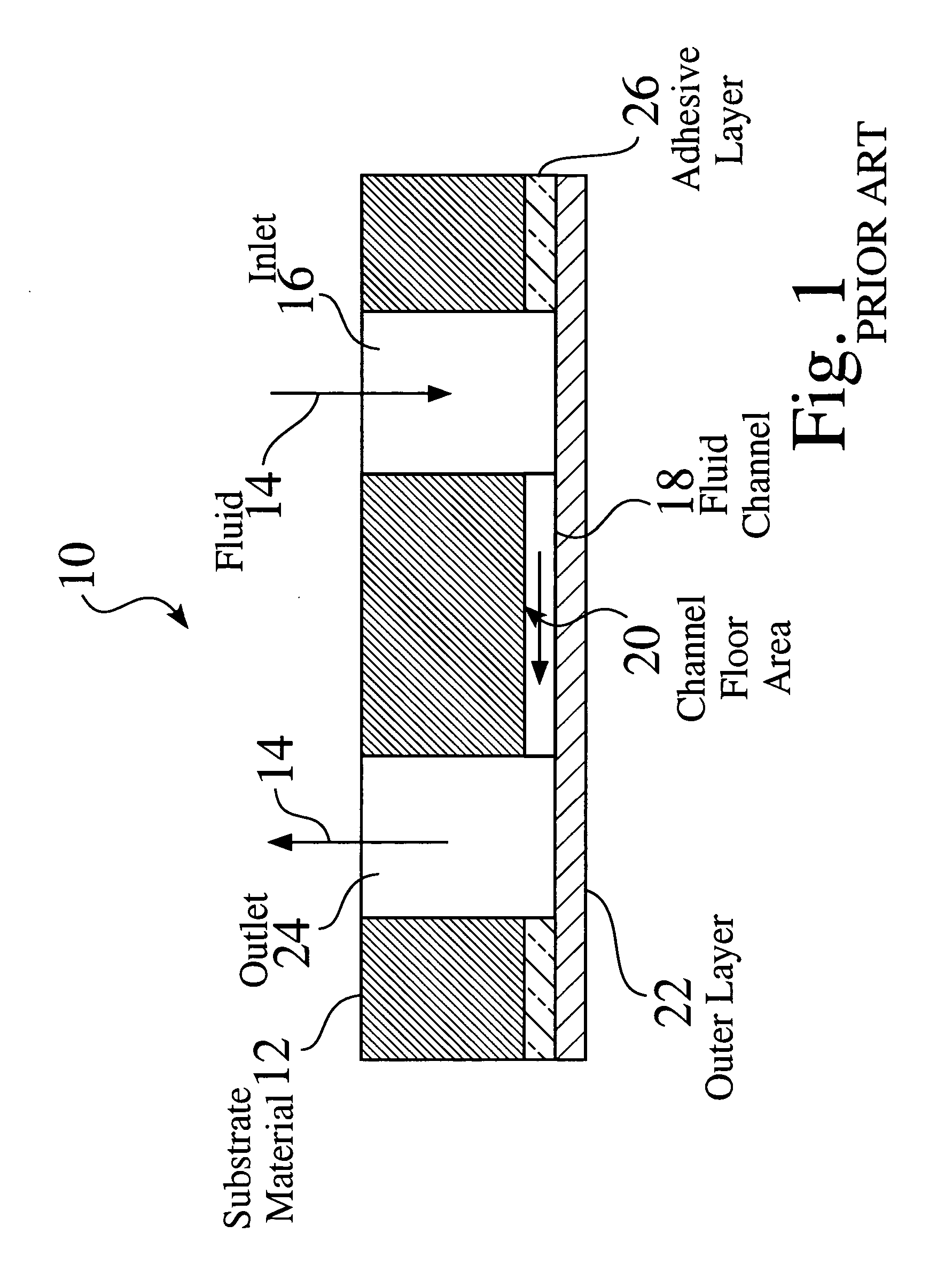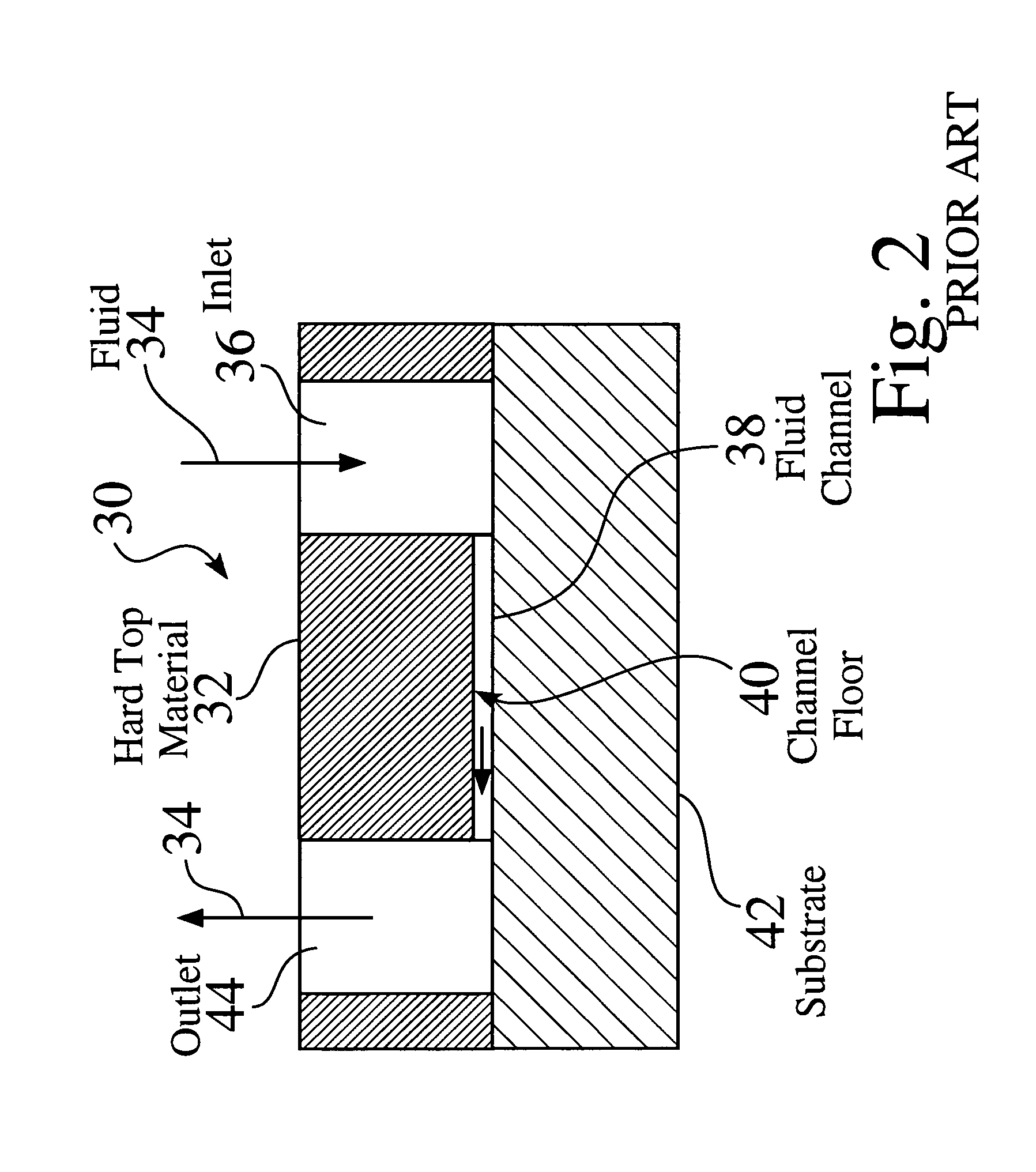Microfluidic system with integrated permeable membrane
a microfluidic system and permeable membrane technology, applied in the field of microfluidic devices and systems, can solve the problems of unfavorable contamination levels, difficult or expensive fabrication, carry-over artifacts,
- Summary
- Abstract
- Description
- Claims
- Application Information
AI Technical Summary
Problems solved by technology
Method used
Image
Examples
embodiment 340
[0153]FIG. 15 illustrates an embodiment 340 wherein the valve actuation access ports 342a and 344a are located on the side of chip opposite the exemplary fluid access port 346.
embodiment 350
[0154]FIG. 16 illustrates an embodiment 350 wherein the valve actuation access ports 342b and 344b are located on the same side of chip as the exemplary fluid access port 356.
[0155] In the embodiments shown in FIGS. 14-16, it is possible for the pressure distribution channels to cross over fluid channels without collapsing them when pressure is applied, i.e., activating a parasitic valve, since the area of the valve as designed is much larger than the cross over area of exemplary pressure distribution channel 326 and exemplary fluid channel 334. This means that whereas the force applied to a designated valve is sufficient to cause the valve to close; this is not the case for a cross over where the force is not sufficient to cause a parasitic valve to close. An important aspect of the design and implementation of practical and useful valves is that the membrane is deflectable with a reasonable applied pressure. Parameters which affect the deflection pressure are the valve area, chann...
PUM
 Login to View More
Login to View More Abstract
Description
Claims
Application Information
 Login to View More
Login to View More - R&D
- Intellectual Property
- Life Sciences
- Materials
- Tech Scout
- Unparalleled Data Quality
- Higher Quality Content
- 60% Fewer Hallucinations
Browse by: Latest US Patents, China's latest patents, Technical Efficacy Thesaurus, Application Domain, Technology Topic, Popular Technical Reports.
© 2025 PatSnap. All rights reserved.Legal|Privacy policy|Modern Slavery Act Transparency Statement|Sitemap|About US| Contact US: help@patsnap.com



